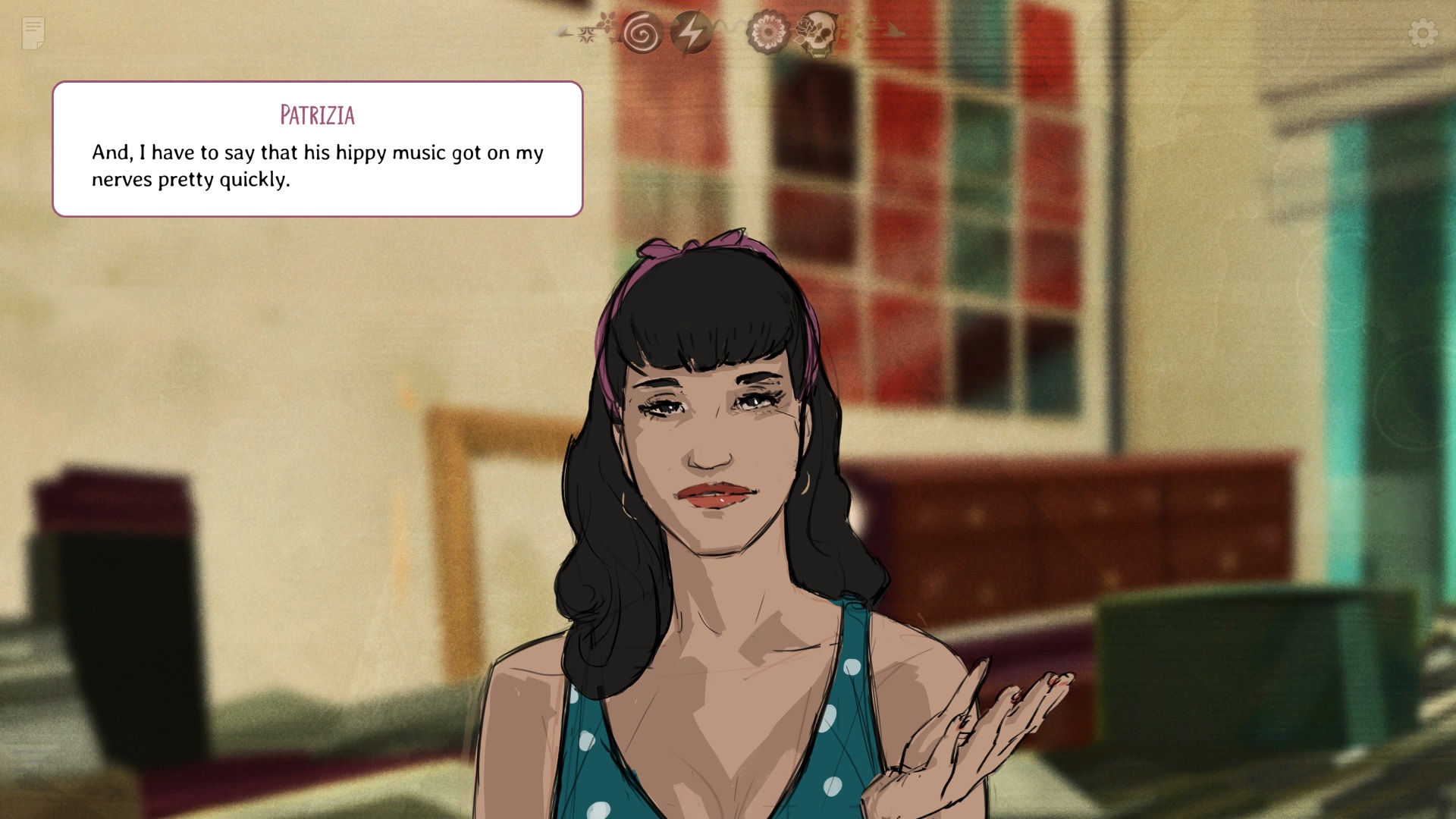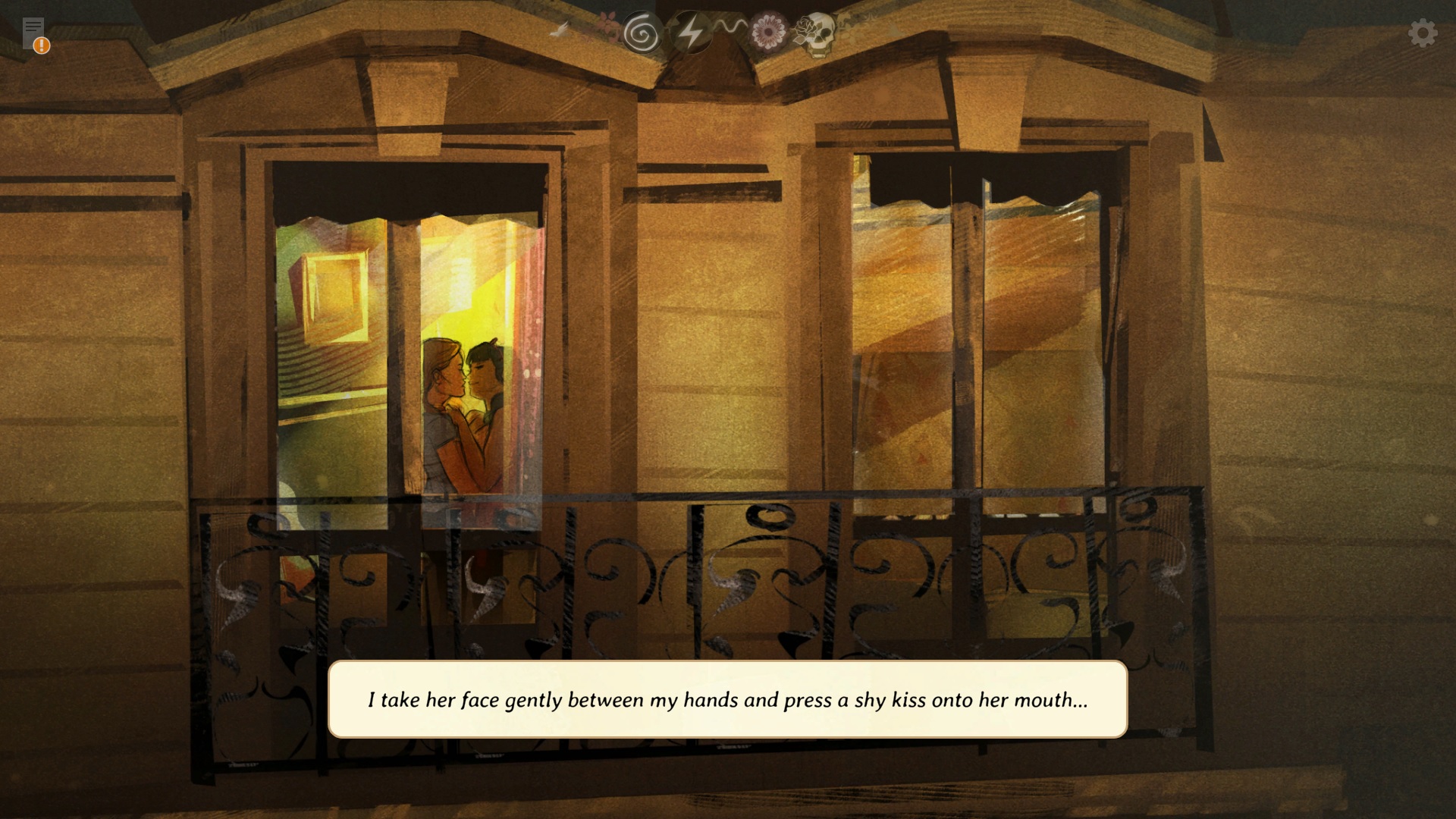Across the Grooves Review
A funky trip

Across the Grooves is an interactive graphic novel developed by Nova-box. Way, way back in 2018 (centuries ago, I know), I reviewed Nova-box’s previous title Seers Isle, warmly praising its involved worldbuilding and intricate narrative branching. With their latest foray, Nova-box’s formula adapts to a newer, modern setting and vibe.
Unlike the Norse-inspired landscape of Seers Isle, Across the Grooves follows its protagonist, Alice, on a tour through present-day Europe to discover the secrets of an enigmatic record sent to her by an ex-boyfriend. Cue a cavalcade of classic rock references.
Rock on

Alice’s journey through a continent of record shops is steeped in nostalgia for the styles and aesthetics of beatnik and grunge. I’m not a classic rock person, so its many references were lost on me. Across the Grooves does include an in-game lexicon to get you up to speed on the lingo, but I rarely found myself referring it, instead just skipping over mentions of Hawkwind and Jimmy Page, smiling and nodding. Perhaps it’s me and my pride, but the mere existence of the lexicon felt condescending, a half-hearted attempt to enlighten myself and other uncultured swine of the difference between the Dead and Led Zeppelin. For some, these references will be the invitation in; for me, they became a sign that I wasn’t wanted.
Though Across the Grooves adopts a minimalist style, it offers other interface and UI elements worth noting. Seers Isle uses a system where symbols at the top of the screen illuminate when players make a choice; Across the Grooves borrows this device, but it feels somewhat misplaced here. In Seers Isle, the Norse-inspired aesthetic makes the vague symbols cryptic yet meaningful in their hint of spirituality. In Across the Grooves, the symbols present—Spiral, Lightning, Flower, and Skull—just feel confusing and lack clarity.
I only concluded partial notions of how choices were assigned through this system: Spiral often indicates a choice where Alice delves for more information, which nearly always means learning classic rock facts; Lightning indicates hastiness; Flower indicates meekness; Skull indicates honest or directness. Yet, these facets don’t feel dynamic enough as a means of reflecting the shape of Alice through player choice, nor are they nuanced enough to reflect my own personality as a player; they aren’t effective as a mechanism for expression.
Make a move

Not to sound like a broken record (pun definitely intended) but in Seers Isle, the symbols aligned with specific characters, so they developed some meaning and clarity in that way: a choice aligned with “X” symbol aligns the player with “X” character. Even there though, they don’t quite work for me. I wonder why the player needs immediate visual input on the choices they make and if that input diminishes the emotional impact of the choice.
Though the extensive cast of characters feel lived in and wholly rendered, their sheer volume made it difficult to invest in their relationships with Alice. Alice herself is by far the most interesting character, but her growth appears (it’ difficult to tell exactly how much different choices or alignments with various symbols affect her) limited to different tastes in music based on the player’s choices. In addition, Alice’s visual presentation, whether she sports a goth look or a diva look, appears to be a key element of Across the Grooves’s narrative branching but it, quite literally, is only superficial. However, the genuine moments of warmth and intimacy between Alice and the strangers she meets are the moments that I will remember from my experience with Across the Grooves.
Ch-ch-ch-changes

Another noteworthy component of Across the Grooves is its affecting score, which ranges from psychedelic dirge to angsty indie-rock anthem. Its score shines in moments when Alice listens to the mysterious record that drives the plot. These scenes play as interactive songs, though the songs don’t seem to change based on player actions, which makes sense from a development cost point of view, but it’s still disappointing.
It might seem like I’m down on Across the Grooves, but I ultimately lost myself in its heartfelt fervour. It possesses a certain melancholy and longing that I admire. That mood is captured beautifully by its illustrations which in rare moments collapse and collide in colourful fractal parallaxes. Despite the flaws I’ve keyed in to, the direction of its narrative surprised me, and its twists kept me hooked. Like Seers Isle before it, Across the Grooves’ worldbuilding is its strength. It crafts a deep beatnik, classic rock mythology surrounding the record at its centre, and while I often felt like I didn’t belong in that world, I remained intrigued by the secrets it offered. When I finished Across the Grooves, I replayed Seers Isle. Then I began Across the Grooves again. I look forward to Nova-box’s next project as their work continues to delight.
[Reviewed on PC]

